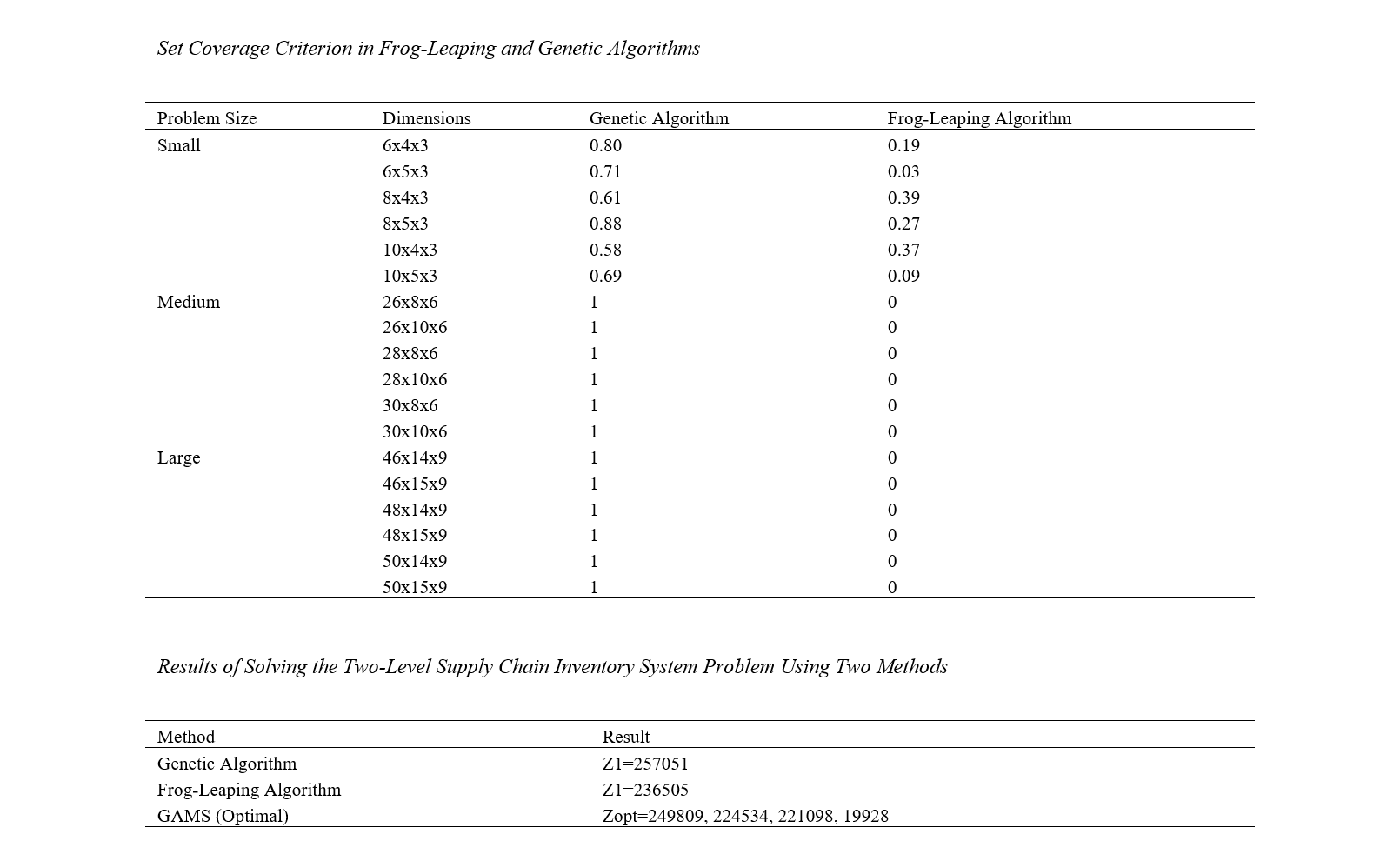Identification and Analysis of Supply Chain and Supplier Risks Using Frog-Leaping and Genetic Algorithms (A Case Study in the Automotive Industry)
Keywords:
Risk, Supply Chain, Suppliers, Frog-Leaping Algorithm, Genetic Algorithm, Automotive IndustryAbstract
Objective: The increasing complexity of the production process, the use of machines with advanced and modern capabilities, and the growing demand for products compel industry owners to maximize their capabilities at minimal costs towards production, reduce the risk of product manufacturing, and also improve the quality of their manufactured products to access broader markets. One of the most important factors in achieving this goal is the assessment of risk in product manufacturing. Given the financial difficulties in the automotive industry, supply chain management is of high importance because employing high-risk suppliers increases the possibility of rework and is economically detrimental to the automotive industry.
Methodology: To examine the risks in the automotive supply chain, mathematical modeling was used, and the model was executed with two metaheuristic algorithms.
Findings: Comparing the results, it is evident that the research model was analyzed with both exact solution methods and a metaheuristic approach, where in the metaheuristic method, it was solved using genetic and frog-leaping algorithms. By comparing the research outcomes, it can be said that the exact solution method shows better and more optimal results.
Conclusion: However, due to the NP-HARD nature of the problem, this method does not reach a solution in a logical time frame for larger dimensions of the problem. Therefore, the problem was solved with metaheuristic algorithms. Comparing the algorithms, it can be seen that the frog-leaping algorithm has provided more optimal results, but the solving time was less in the genetic algorithm compared to the frog-leaping algorithm.
Downloads

Downloads
Additional Files
Published
Submitted
Revised
Accepted
Issue
Section
License
Copyright (c) 2024 Mohsen Khosravian (Author); Mohammad Ebrahim Pourzarandi (Corresponding Author); Jalal Haghighat Monfared (Author)

This work is licensed under a Creative Commons Attribution-NonCommercial 4.0 International License.















